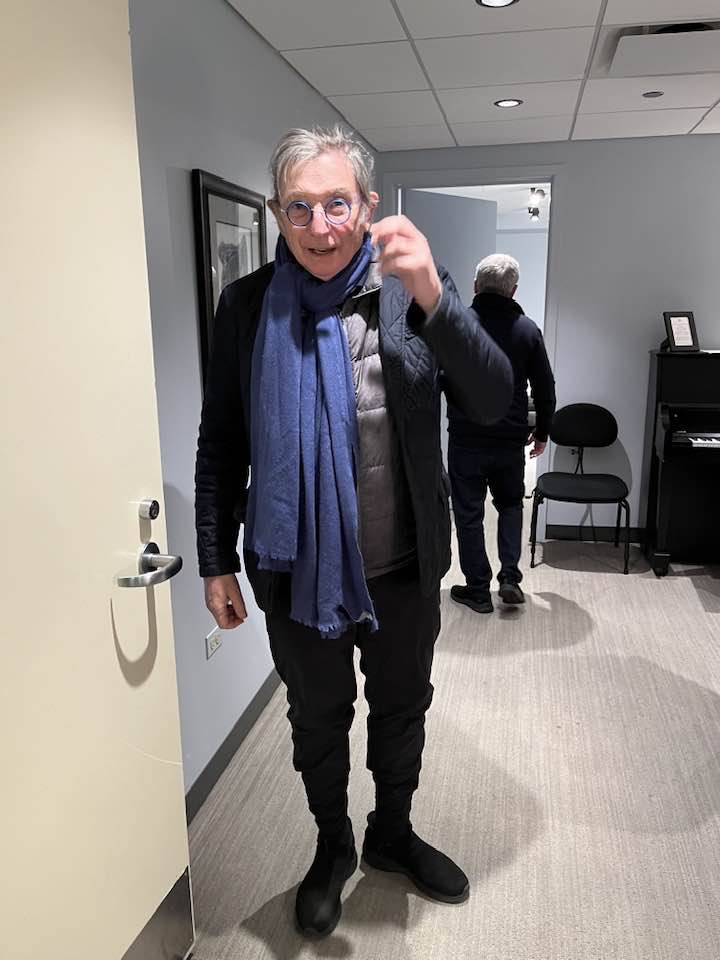Where does it hurt, Maestro?
mainNew lab tests assess and address conductor pain. Check out the remedies here.
Meantime, anyone know a good clinic for writer’s shoulder?

New lab tests assess and address conductor pain. Check out the remedies here.
Meantime, anyone know a good clinic for writer’s shoulder?

We hear that Stephen Rose, former head of…

There have been some irreparable losses. Germany mourned…

The prolific international conductor Michael Tilson Thomas, diagnosed…

The steady departure of cherished professors at the…

Session expired
Please log in again. The login page will open in a new tab. After logging in you can close it and return to this page.
Conductor pain: the pain they suffer from or the pain they inflict?
Good question!
It’s not only about posture – it’s about not using any unnecessary muscles. It’s evident from the photo in the article that the wired up fellow has excess tension in the lateral deltoids, which abduct the upper arm.
That’s quite common. Other common excess tension spots are the pectoral & trapezius muscles that raise the shoulder; muscles of the fingers and hand, especially in holding a baton; quadriceps; forehead; and jaw.
That was quite clinical sounding, but I don’t doubt you are correct.
Interesting choice of photo…
I watched Gatti last year conduct Mahler 3 at Carnegie Hall, and it occurred to me then that he was a wound-up, tense conductor (I remembered noting this in my mind, watching him from the front throughout that concert) — not, I hasten to add, that it deducts at all from his exceptional artistry or results that night.
Fists might get a bit sore if you are one particular maestro…
Seriously though, I found that Alexander Technique was brilliant for posture issues and general “balance” within the body, has not only helped with music making but also during long office hours as well.
Fascinating article – the Alexander Technique is a brilliant tool for conductors as evidenced by the profound effect it had on the work of Sir Adrian Boult and Sir Colin Davis.
Sir Colin wrote:
“Early in my professional career the celebrated conductor Sir Adrian Boult, who had himself had Alexander lessons, sent me for lessons in the Technique. ‘My boy,’ he said, ‘you’ll end up crippled if you go on like that.’ I have been a pupil of the Technique now for over forty years, the benefits to me have been immeasurable, and I would recommend all students to take advantage of the programme of lessons available at the Royal Academy of Music.”
I would suggest that the pain conductors can suffer could be related to the pain inflicted (as mentioned in the first two comments above) i.e. inefficient muscle use = spasmodic, imprecise conveying of musical vision = lack of clarity = lack of satisfaction for players.
…basically a lack of technique, then. There are far too many conductors who suffer from that and, consequently, make their players and singers suffer, too.
Alexander technique is valuable for learning to stand in an efficient way. But there’s much more to the physical aspect of conducting. Much of effective conducting involves, obviously, the arms, and less obviously, the relationship of the temporality of the tension/freedom of the muscles moving the arms, to the inner temporal structure of the beat. Thus using all the muscles in the most efficient way – i.e. using only the muscles necessary – is a critical component of effective conducting technique, and important to staying free from injury.